This lonely fir tree at the east end of Montana’s Centennial Valley has had some interesting history over the last several years.
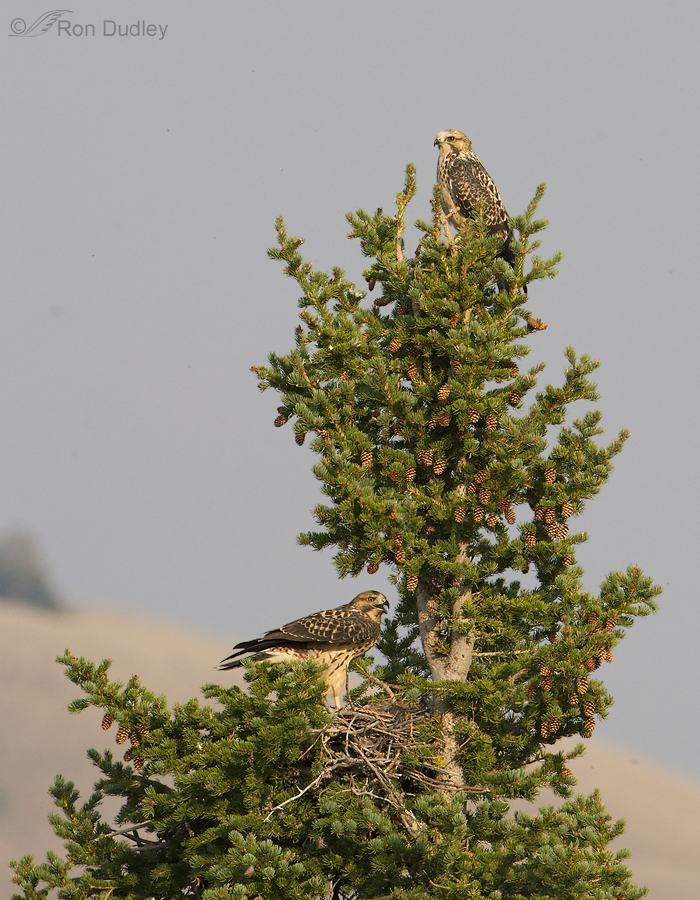
1/1250, f/8, ISO 500, Canon 7D, Canon EF500mm f/4L IS USM, not baited, set up or called in
The tree, near the eastern boundary of Red Rock Lakes National Wildlife Refuge, was the site of a Swainson’s Hawk nest in the summer of 2012. This image, taken on 8/22/12, shows the nest with two fairly recently fledged Swainson’s siblings. I had a grand time with this hawk family that summer so the following year I was looking forward to the possibility of repeating the experience.
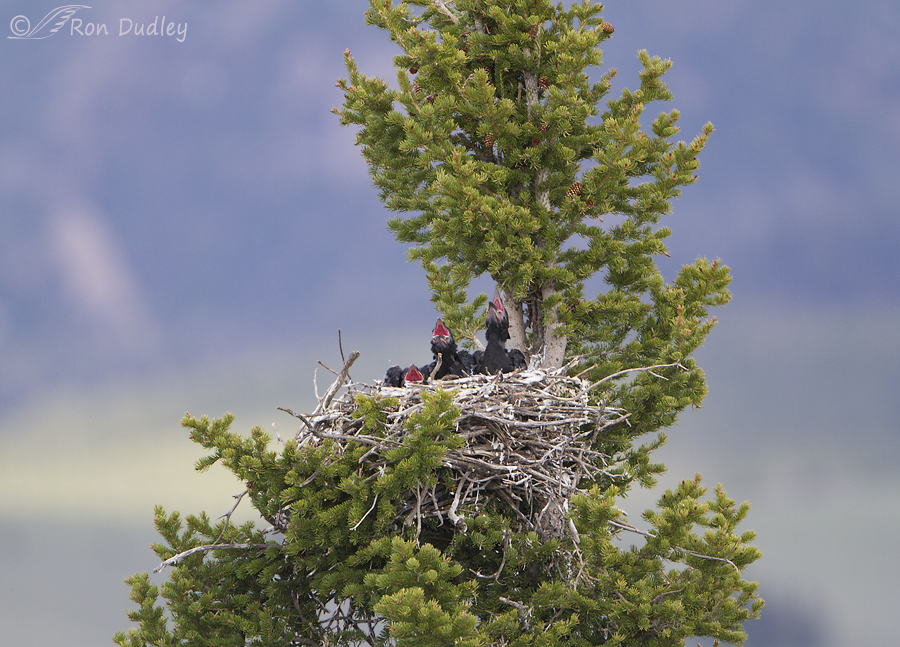
1/640, f/5.6, ISO 640, Canon 7D, Canon EF500mm f/4L IS USM + 1.4 tc, not baited, set up or called in
To my surprise I found a clutch of four Common Raven chicks in the nest the following June (image taken 6/5/13). The nest had been refurbished and strengthened (Swainson’s Hawks are known for building nests that are more flimsy and ragged than those of other buteos).
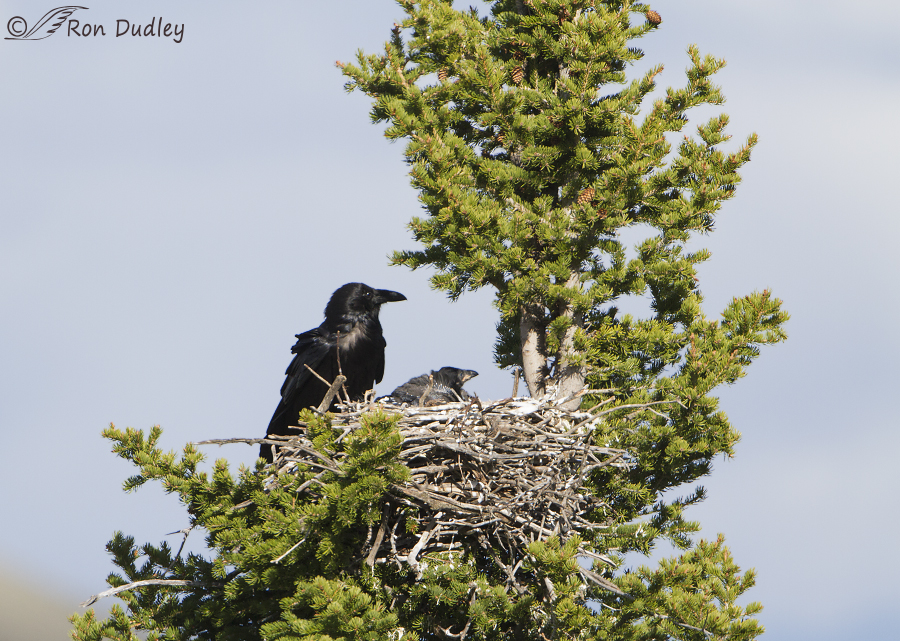
1/2000, f/6.3, ISO 500, Canon 7D, Canon EF500mm f/4L IS USM +1.4 tc, not baited, set up or called in
I’m not particularly fussy when choosing my avian subjects so I was happy to photograph the ravens as the adults went about raising their family.
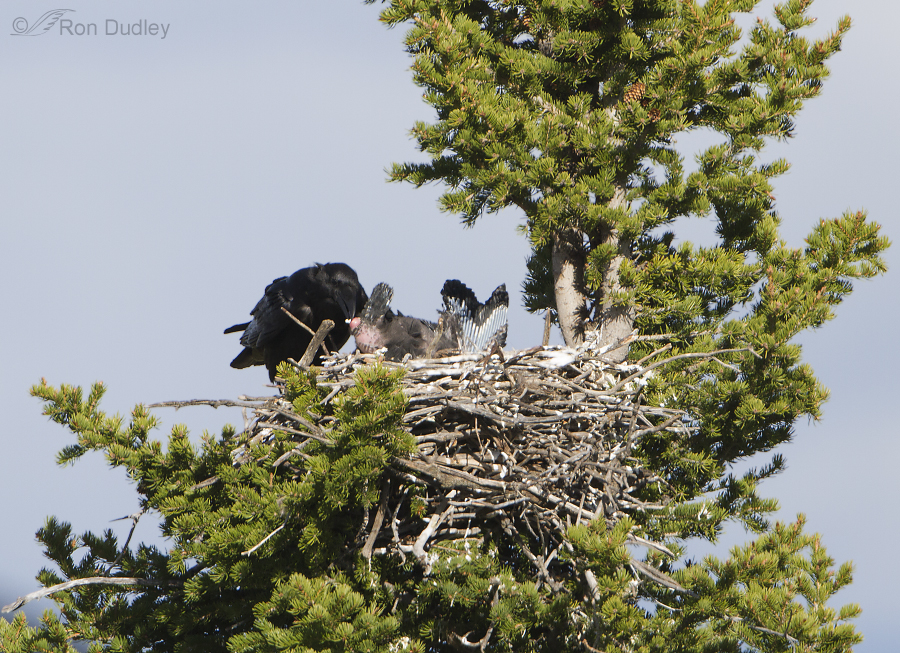
1/1600, f/6.3, ISO 500, Canon 7D, Canon EF500mm f/4L IS USM, not baited, set up or called in
This shot (one I’ve posted previously) shows one of the chicks presenting a fecal pellet from the cloaca to the parent. The adult then flew away with the pellet for disposal.
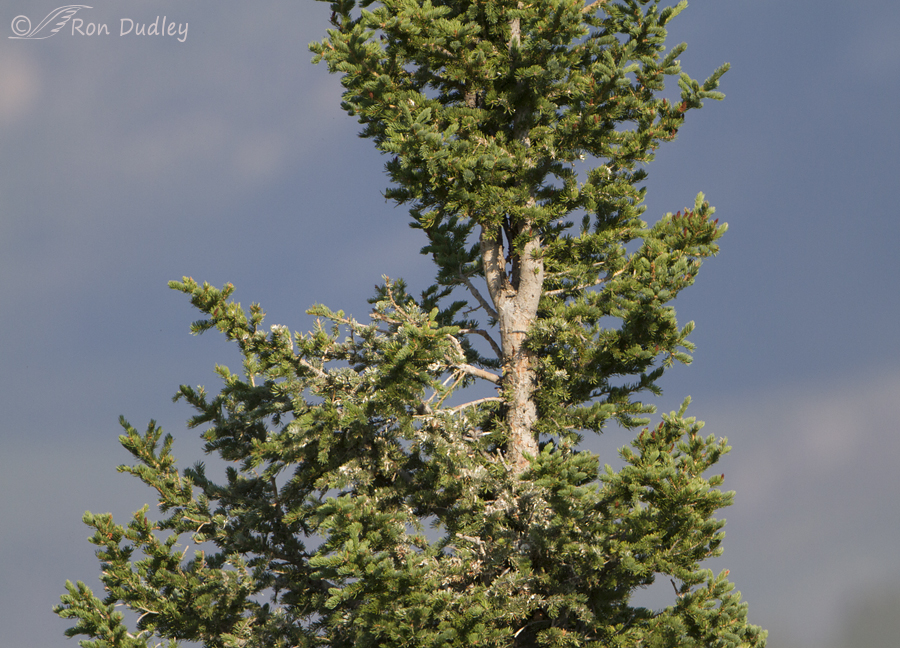
1/2000, f/5.6, ISO 500, Canon 7D, Canon EF500mm f/4L IS USM + 1.4 tc, not baited, set up or called in
Almost exactly a month later (7/2/13) I returned to the nest tree in hopes of finding fledged raven chicks but was disappointed to see that the nest was gone. I have no idea what happened to it as I didn’t walk out to the tree from the road to investigate. It may have been blown down in a storm but I also worry that it was vandalized by humans since many folks don’t like ravens. I surely hope that’s not the case.
I check on this tree during every trip I make to the valley (4-5 trips per summer) so this past summer I was curious to see if there would be another nest in the tree.
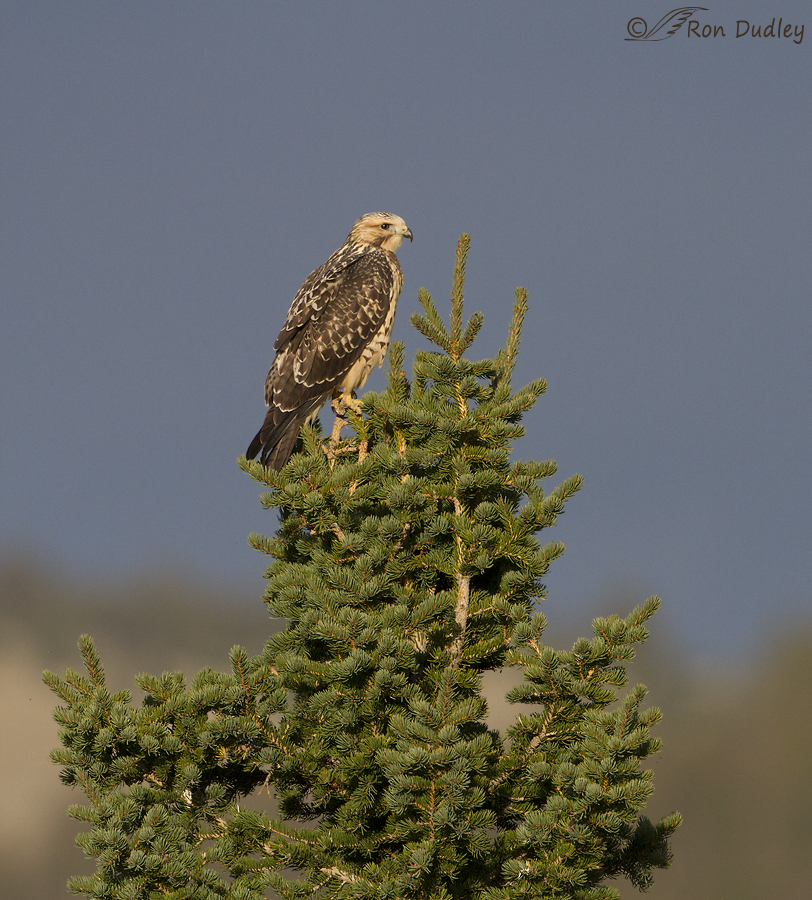
1/3200, f/7.1, ISO 500, Canon 7D, Canon EF500mm f/4L IS II USM +1.4 tc, not baited, set up or called in
But there wasn’t (image taken 9/8/14).
However, another family of Swainson’s Hawks (one adult and two young siblings) hung around the general area during our early September trip and their nest may have been nearby, though I never did see it. Occasionally, one of the young hawks would land on the old nest tree and they did it often enough that it made me wonder if they were somehow innately aware of the history of that tree with their species. I doubt it but I must admit that the thought entered my mind and it did so more than once.
I also thought it was interesting to note the changes in the tree from summer to summer involving shape, size, growth patterns and the presence or absence of cones. I wish I had a more thorough botany background so I could better interpret those changes.
Ron


Great photos, love the brightly colored baby birds’ mouths.
I love these photos and I love the story. How neat that the residents keep surprising you like that! Please keep this story going. Thanks Ron.
Wonderful shots and interesting history Ron!
Charlotte
Add me to the list of people whose fancies have wings. And soar.
A wonderful series. Thank you.
A great story of the tree and its inhabitants.
Thank you, Arwen.
Seeing the hawk again in the last photo made me smile. I found myself wondering if perhaps the adult in question was one of the babies from the nest you originally saw. I’m also glad that I’m not the only one who finds myself hoping that the birds I see nesting will return the following year. That’s how I was with the Kestrels we watched last year, and they actually came back this year. We didn’t see as much of them as the previous year because they nested later and we were not at home during much of the process. But we knew there were babies because we recognized the calls of parents who are trying to persuade the kids to fly. At least with the Kestrels, it seems like if they find a good nesting spot they will utilize it again. Now I’m hoping for next year…
Susan, I think it’s pretty typical for folks like us to hope for birds to return to nests they’ve used before. It means they survived and they’re about to try to raise youngsters.
Ron, a great idea to produce a terrific diary of images for that magnificent tree. A real chronicle of Nature at work. This is an example of why you are an “artist” instead of a “picture-taker”.
And we are all better off because it is so.
Thank you, Wally. Don’t know if I’m an artist or not but I do like to tell stories with images and words.
Ron, thanks for the story of the procession of inhabitants, and I hope they are all flying high!
I hope they are too, Alison.
In a wildly anthropomorphic flight of fancy, I imagine the tree is lonely without a nest. After all, a tree must just stand there, through all the seasons, year after year. Surely it must be entertaining to have a family choose to shelter in your branches for a couple of months.
I have similar “flights”, Mikal. Glad to have some company…